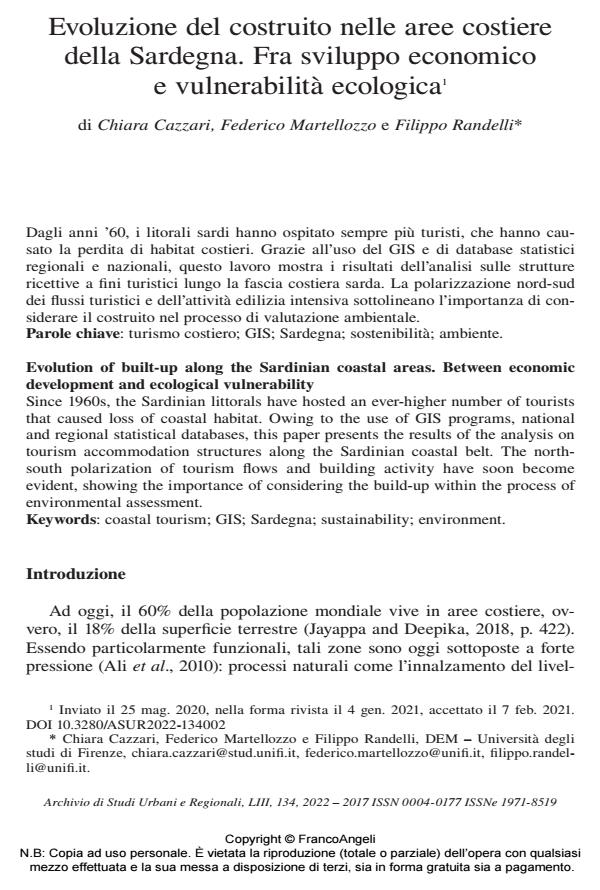Evoluzione del costruito nelle aree costiere della Sardegna. Fra sviluppo economico e vulnerabilità ecologica
Titolo Rivista ARCHIVIO DI STUDI URBANI E REGIONALI
Autori/Curatori Chiara Cazzari, Federico Martellozzo, Filippo Randelli
Anno di pubblicazione 2022 Fascicolo 2022/134
Lingua Italiano Numero pagine 21 P. 31-51 Dimensione file 178 KB
DOI 10.3280/ASUR2022-134002
Il DOI è il codice a barre della proprietà intellettuale: per saperne di più
clicca qui
Qui sotto puoi vedere in anteprima la prima pagina di questo articolo.
Se questo articolo ti interessa, lo puoi acquistare (e scaricare in formato pdf) seguendo le facili indicazioni per acquistare il download credit. Acquista Download Credits per scaricare questo Articolo in formato PDF

FrancoAngeli è membro della Publishers International Linking Association, Inc (PILA)associazione indipendente e non profit per facilitare (attraverso i servizi tecnologici implementati da CrossRef.org) l’accesso degli studiosi ai contenuti digitali nelle pubblicazioni professionali e scientifiche
Dagli anni ’60, i litorali sardi hanno ospitato sempre più turisti, che hanno cau- sato la perdita di habitat costieri. Grazie all’uso del GIS e di database statistici regionali e nazionali, questo lavoro mostra i risultati dell’analisi sulle strutture ricettive a fini turistici lungo la fascia costiera sarda. La polarizzazione nord-sud dei flussi turistici e dell’attività edilizia intensiva sottolineano l’importanza di con- siderare il costruito nel processo di valutazione ambientale.
Parole chiave:turismo costiero; GIS; Sardegna; sostenibilità; ambiente.
- Computational Science and Its Applications – ICCSA 2024 Workshops Nicolò Fenu, Ginevra Balletto, Giuseppe Borruso, pp.131 (ISBN:978-3-031-65237-0)
Chiara Cazzari, Federico Martellozzo, Filippo Randelli, Evoluzione del costruito nelle aree costiere della Sardegna. Fra sviluppo economico e vulnerabilità ecologica in "ARCHIVIO DI STUDI URBANI E REGIONALI" 134/2022, pp 31-51, DOI: 10.3280/ASUR2022-134002